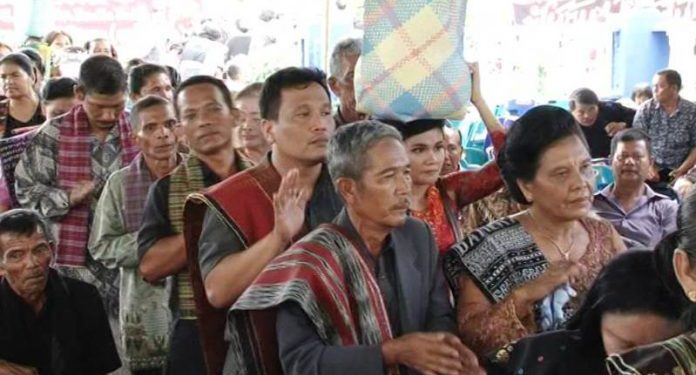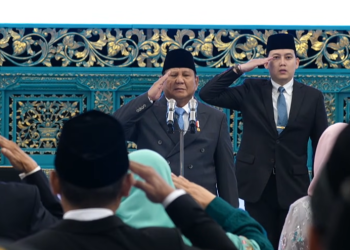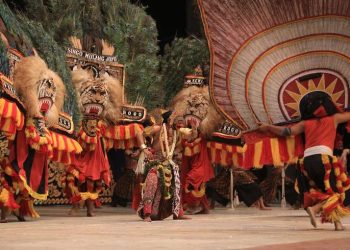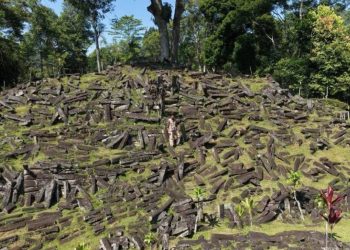Jakarta, Indonesia Sentinel — While funeral are often marked by mourning, in Indonesia’s Batak Toba culture, the passing of an elder can become a grand celebration known as the Saur Matua ceremony, a final tribute to a life considered complete.
More than just a burial ritual, Saur Matua represents the highest honor a Batak Toba family can give to a loved one. Reserved for elders who pass away having fulfilled their traditional roles (from married, having children, grandchildren, and even great-grandchildren), the ceremony symbolizes a life that has reached its natural and social fulfillment. All their children must also be married; if not, a different, less elaborate ritual is held.
Practiced for centuries, the tradition remains strongest in Doloksanggul, Humbang Hasundutan Regency in North Sumatra, where it serves not only as a rite of passage but also as a powerful form of cultural transmission.
Central to the Saur Matua ritual are deeply symbolic elements. One of the most visually striking is marhobas, the carrying of the coffin while dancing to the traditional gondang sabangunan ensemble. Though festive in appearance, the dance is a solemn gesture of respect for someone seen as having completed the full cycle of life.
The Saur Matua ceremony can last several days, depending on the family’s social standing and preferences. Its core phases include:
Mangaranto
The Mangaranto was an Initial preparation for the ritual, such as forming an organizing committee, fundraising, and consulting traditional elders. Decisions are made about the venue, guest list, and musical arrangements.
Martonggo Raja
An official meeting involving male and female clan leaders to finalize the structure and leadership of the ceremony.
Mamasumasu
A blessing ritual in which children and grandchildren give prayers and farewell messages to the deceased, symbolizing generational continuity.
Read Also:
Ancient Book ‘Pustaha Laklak’ Holds Centuries of Batak Mysticism in North Sumatra
Mangulosi
The presentation of ulos, a sacred handwoven cloth given to the deceased and surviving family members. Each pattern carries distinct meanings — for instance, ulos ragi hotang signifies love and eternal unity.
Marhobas
The emotional and symbolic peak of the ceremony, where the body is paraded in dance, accompanied by traditional Batak music, celebrating the departed’s completed life journey.
Panguburan
The burial process to mark the end of the ritual. This process conducted in accordance with Batak customs, followed by a pau-pau gathering at the family home to express gratitude to attendees.
The Saur Matua is more than a funeral rite, it’s a vessel for character building and cultural education. It reinforces respect for elders, unity among siblings, and the preservation of traditional music and symbolic expression. Above all, it affirms the unique identity of the Batak people and their continued connection to ancestral values.
(Raidi/Agung)
























